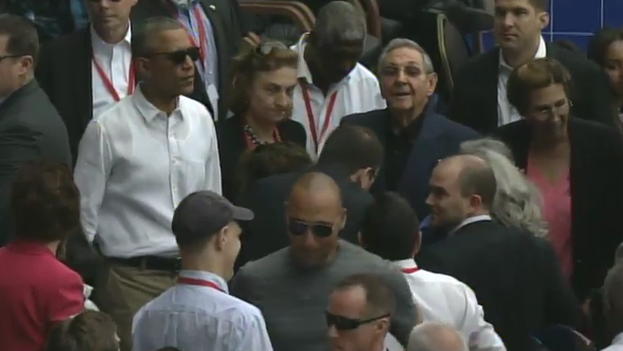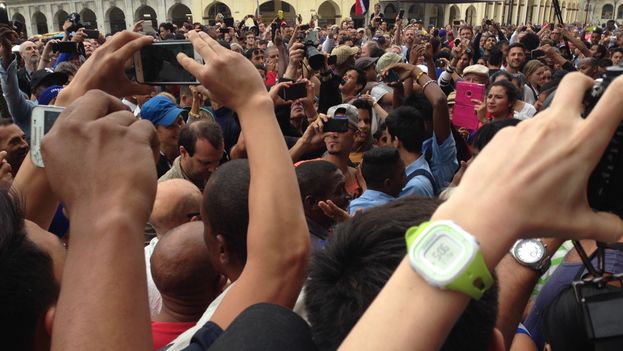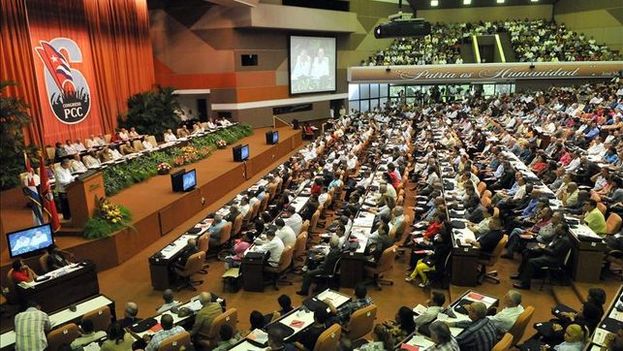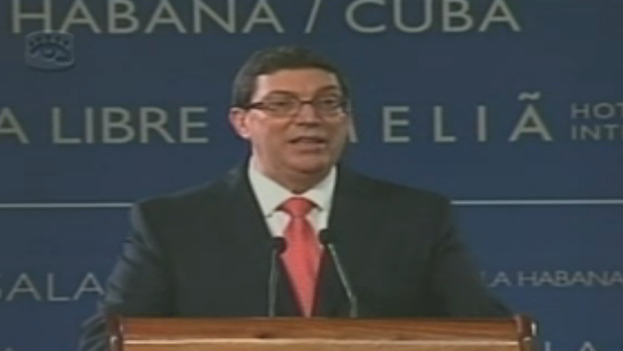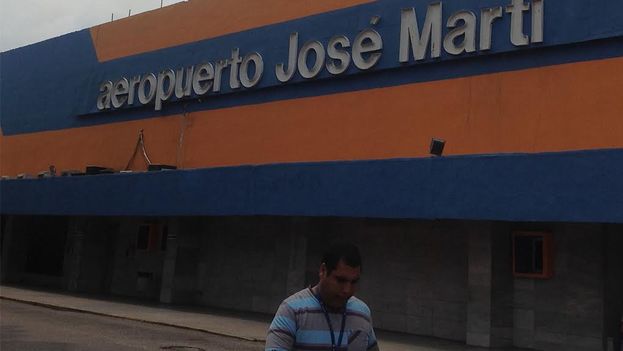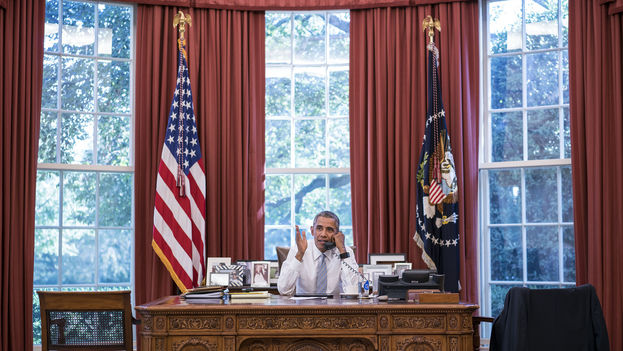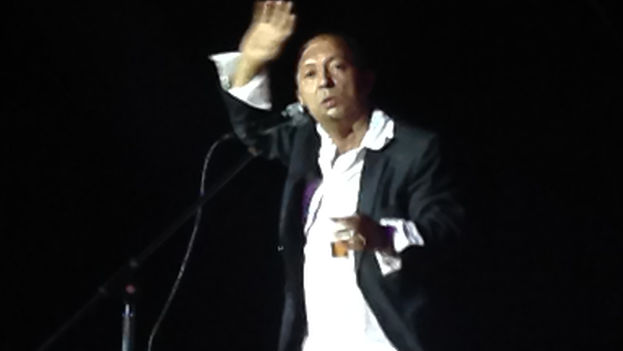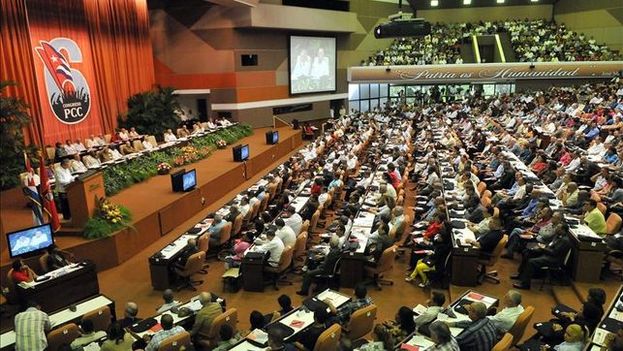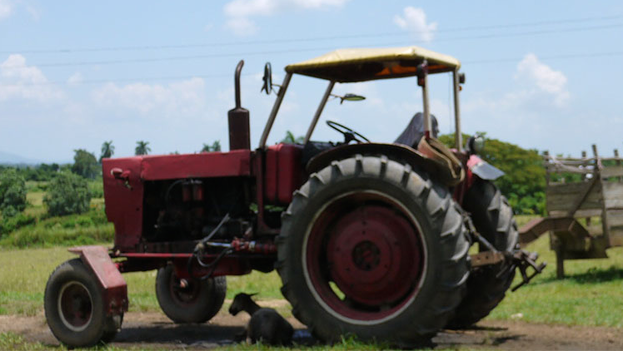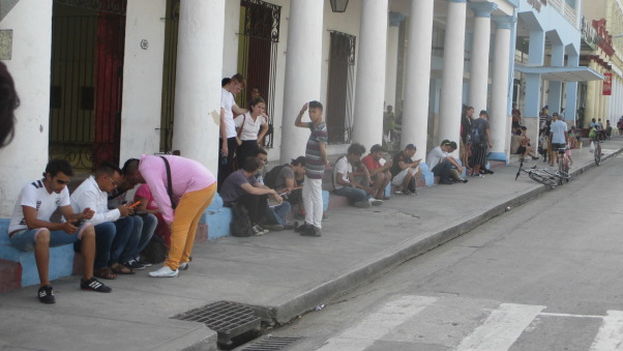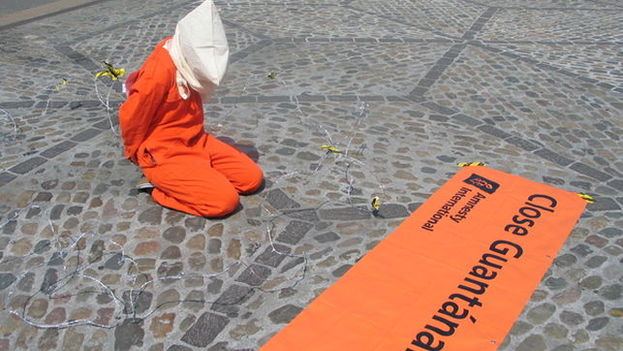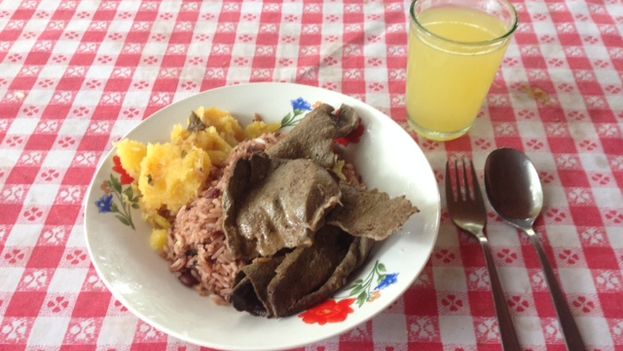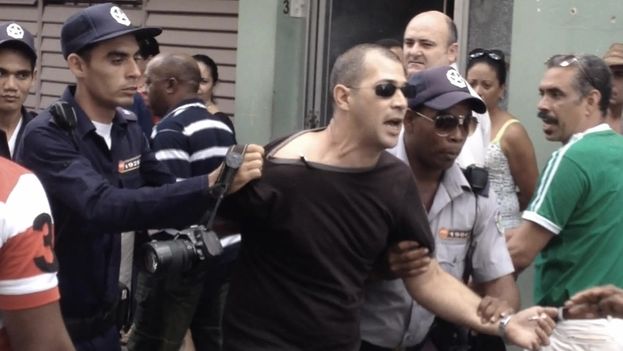First it was a lady, let’s call her a young woman, who on seeing me – on being surprised by me, according to her – pointed at the sign that indicated the proximity of the airport and told me in a combative and energetic tone, “Compañero, what are you doing taking pictures here?” With my best good faith I answered her that I was doing what any visitor to the city does and continued on. continue reading
Then I found a good angle to capture the bust of José Martí, the flag and the front of the terminal; a few steps further on, the picture improved because the control tower could be seen in the background, which is the hallmark of any airport.
When I was at a suitable distance to capture the sign with the full name of the place, a voice – polite and authoritarian – called my attention, while the image of a man interposed itself in the bottom of the frame.
“Why are you taking photos?” he asked me, almost friendly. As I was beginning to lose patience I answered with a question, “If I were a foreign tourist who was taking photos, would you say something?”
He asked me to relax, because his job was to “protect” the place and he wanted to know my motives.
To get a step ahead of his intentions, I voluntarily showed him my identity card.
Then another one came over. “What’s going on here?” he spat out in a scolding tone. Barely listening to the explanations he pulled out a card where I could see the letters DSE, which identify the Department of State Security. I’ve always wondered if in the courses these agents take they are trained to show their identification. Because they do it in such a way… that you’re left with the impression they’re going to show you… something else, a pistol, let’s say.
“Come with me!” he said, and began to walk toward a car. “And where are you taking me?” I asked. “I showed you my identification that said I am the authority, now you get in and I am taking you where you belong,” responded the agent, with a gesture not open to appeal, adding in a softer voice, “We are going to talk to you.” The only defense I found at hand was to say, “That is, if I want to talk.”
The car took me to a nearby police station. Although the trip was brief, I recalled Nguyen Van Troi, the young Vietnamese executed on 15 October 1964 for having tried to attack Robert McNamara. Van Troi was surprised while putting mines on a bridge that the United States Secretary of Defense was going to pass under on a visit to Saigon, and I was being taken along the avenue that bears his name under suspicion of disturbing a visit from Barack Obama. At least I was convinced they weren’t going to shoot me, but I couldn’t free myself from the comparison.
Upon arriving at the police station, always accompanied by the young officer who had caught me in flagrante, they sat me down on a bench with some soldiers who were resting from the tiring day of fumigating for mosquitoes. A few minutes later a gentleman around 50, who said he was Lieutenant Colonel Saul, attended to me.
His first words were, “You should know you are not under arrest. You are here to answer some questions.” He wanted to know if I was a journalist and if our organ was dedicated to doing something against the state. I showed him my card that identified me as a journalist with the digital daily 14ymedio, and he asked me who the director (male) was. “Directora (female),” I corrected, “Yoani Sanchez is the directora.” And I gave him a long explanation of our purpose as journalists.
“Ah, yes, Yoani Sanchez!” he said, as if he had understood everything in one fell swoop. He explained to me, very friendly, that they were fulfilling a duty to ensure airport security before the visit of US president. The only thing missing was the Hollywoodesque phrase, “It’s nothing personal, I’m just doing my job.” He asked me to wait a few minutes to consult with his leadership and returned almost immediately to tell me that all I had to do was to erase the photos I had taken.
“In your presence?” I asked him, as if it wasn’t obvious that that was what it was all about.
“Well, that will be easy,” I said, and under the watchful eye of the youngest official I placed four images I had captured in the virtual trash basket. At least I thought I had erased them. Only on returning to the newsroom did I discover, “to my horror,” that one of them had been saved, and it was precisely the one where my captor appeared. But I swear it was unintentional…
I leave it here above this text. I’m just doing my job, trying to show the colors they are using to paint Terminal No. 1.
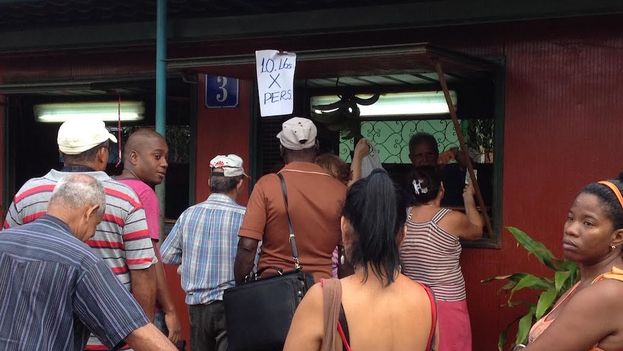
![]() 14ymedio, Reinaldo Escobar, Havana, 25 March 2016 – Expectations soared two weeks ago when Cuban Vice President Jose Ramon Machado Ventura affirmed on national television that the first distribution of potatoes was imminent. This Thursday afternoon the first lines formed at Havana’s markets, in hopes that Good Friday would bring, in addition to a holiday, the return to Cuban plates of the precious tuber.
14ymedio, Reinaldo Escobar, Havana, 25 March 2016 – Expectations soared two weeks ago when Cuban Vice President Jose Ramon Machado Ventura affirmed on national television that the first distribution of potatoes was imminent. This Thursday afternoon the first lines formed at Havana’s markets, in hopes that Good Friday would bring, in addition to a holiday, the return to Cuban plates of the precious tuber.
